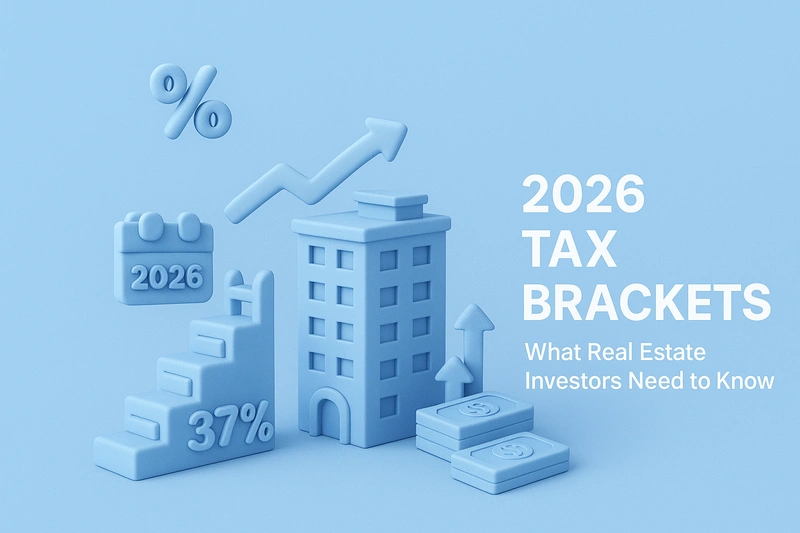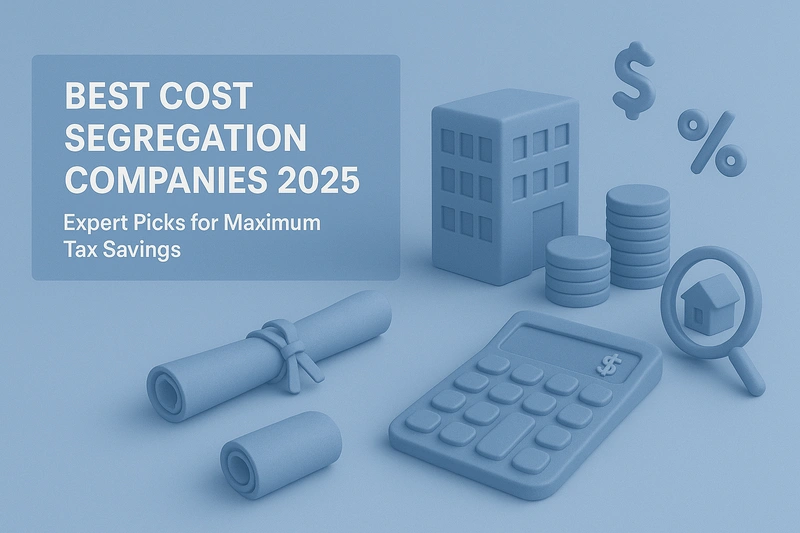The IRS announced 2026 tax bracket adjustments, increasing thresholds approximately 2.5% from 2025 levels. Combined with permanent 100% bonus depreciation from the Big Beautiful Bill, real estate investors have significant tax-saving opportunities.
2026 Tax Brackets for Single Filers
Married filing jointly thresholds double. Standard deduction increases to $15,200 (single) and $30,400 (married filing jointly).
What This Means
A single filer earning $250,000 saves approximately $1,700 from bracket adjustments alone. At an income of $500,000, savings approach $3,000. These are automatic savings requiring no action.
The real opportunity: reducing taxable income to maximize these brackets. Every dollar of deduction at the 37% bracket saves 37 cents. Drop from 32% to 24%, and you save 8 cents on every dollar below that threshold. Cost segregation can play a crucial role in accelerating depreciation deductions into the earlier years of a property’s life.
Real Estate Tax Strategy: Cost Segregation + Permanent Bonus Depreciation
The One Big Beautiful Bill made 100% bonus depreciation permanent for qualifying property acquired after January 19, 2025. No more phase-outs. No more deadlines.
Cost segregation services identify components of your property that qualify for accelerated depreciation:
- 5-year property: Appliances, carpeting, furniture (20-30% of residential property)
- 7-year property: Office furniture, fixtures, equipment
- 15-year property: Land improvements, parking lots, landscaping
These components receive 100% first-year depreciation instead of 27.5 or 39-year schedules.
Example: $2 Million Apartment Complex
Without Cost Segregation:
- Annual depreciation: $58,182 (27.5-year schedule)
- Tax savings at 37%: $21,527
With Cost Segregation:
- Identified for acceleration: $600,000
- First-year depreciation: $658,182
- Tax savings at 37%: $243,527
- Additional first-year benefit: $222,000
Cost segregation studies typically identify 25-35% of residential property and 30-45% of commercial property for acceleration.
Key Considerations
State Conformity: California, New York, and New Jersey don't follow federal bonus depreciation. Research your state's rules before calculating total benefits.
Recapture: Accelerated depreciation faces ordinary income rates (up to 37%) when selling. Building depreciation recaptures at 25%. Plan exit strategies accordingly or use 1031 exchanges to defer.
Real Estate Professional Status: Required to use depreciation against W-2 or business income. Without it, passive loss limitations apply.
Look-Back Opportunities: Properties acquired after January 19, 2025, qualify for 100% bonus retroactively. File Form 3115 to claim missed depreciation without amending returns.
Action Steps for Q4 2025
- Calculate potential savings on properties acquired after January 19, 2025
- Budget for studies – Typically $2,750-$5,000, depending on property size
- Adjust Q4 estimated taxes if implementing cost segregation now
- Review 2026 pipeline – Every acquisition benefits from this strategy
There's no strict property value threshold for cost segregation. While some advisors suggest $300,000-$500,000 as a starting point, it's ultimately a strategic decision between you and your CPA.
The Bottom Line
New 2026 tax brackets provide modest relief. Permanent 100% bonus depreciation delivers massive savings. Combined, they create exceptional opportunities for real estate investors.
A $5 million property can generate $1.5 million in first-year deductions through cost segregation. At the 37% bracket, that's $555,000 in immediate tax savings, far exceeding the bracket adjustment benefits.
Every property acquisition now presents a tax optimization opportunity. No phase-out pressure. No timing games. Just permanent, predictable tax benefits for real estate investors who understand the rules.
Ready to calculate your savings? Get a free cost segregation estimate for your next property acquisition.






